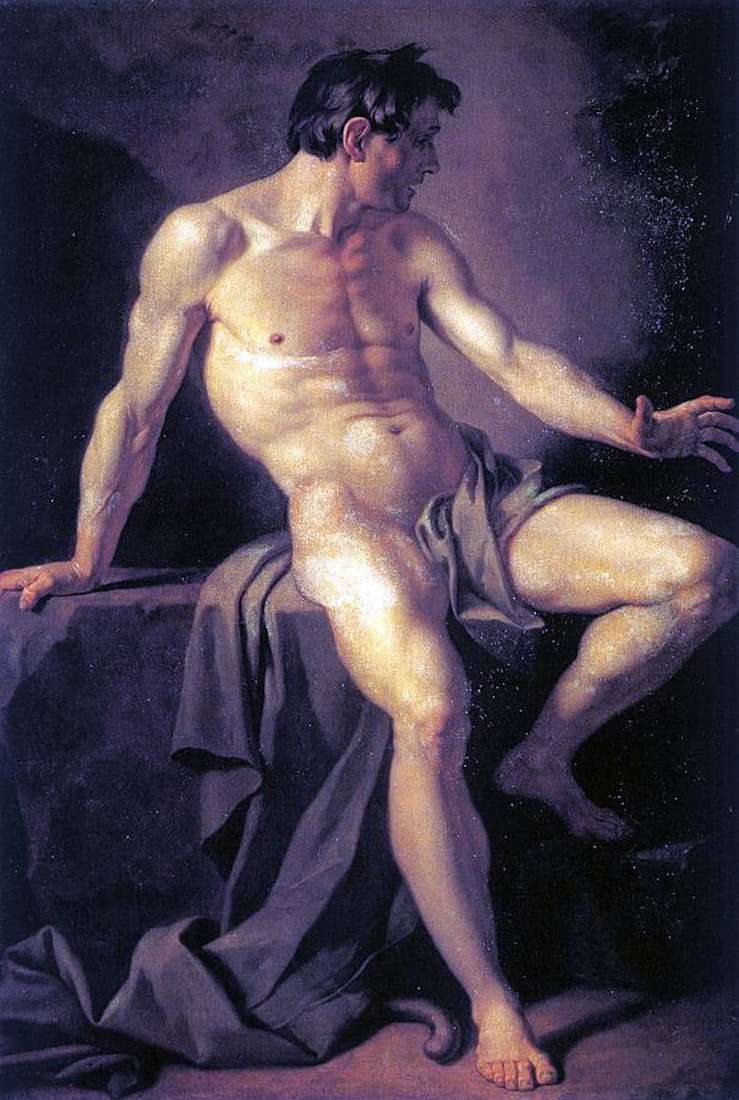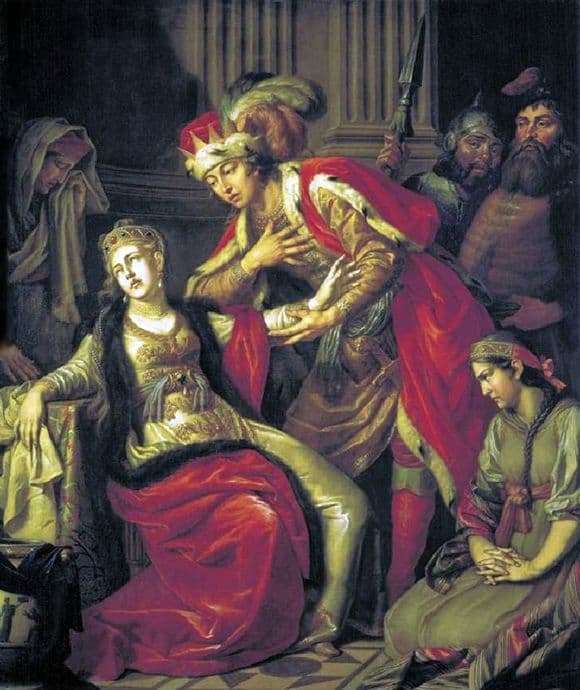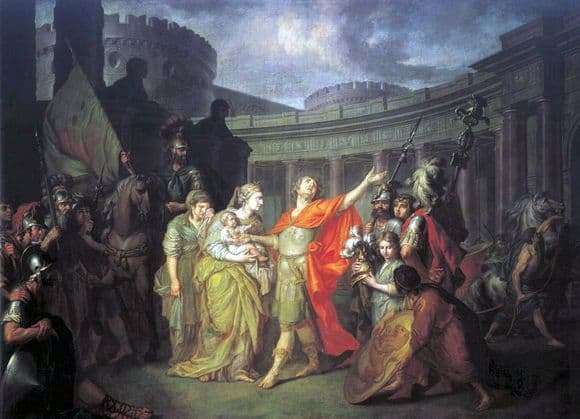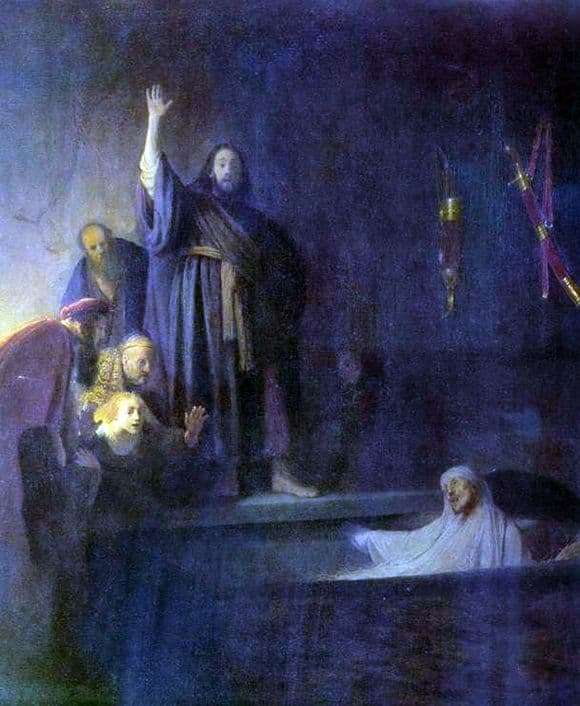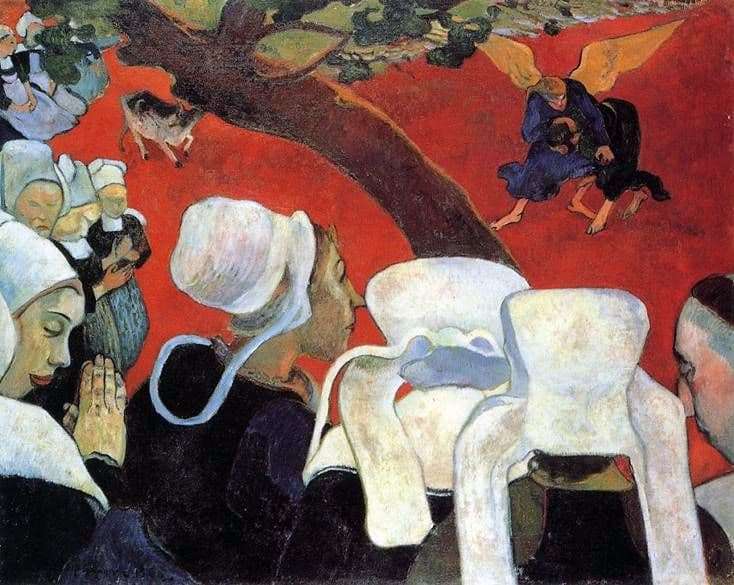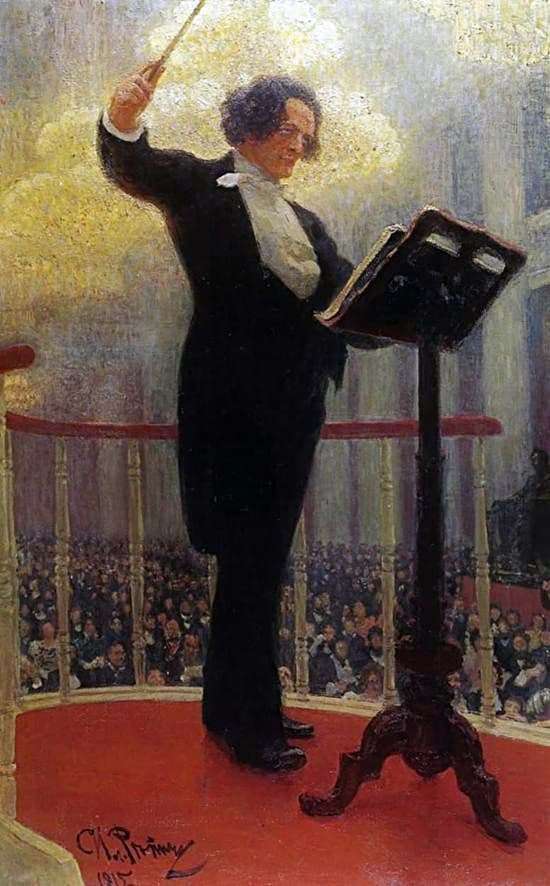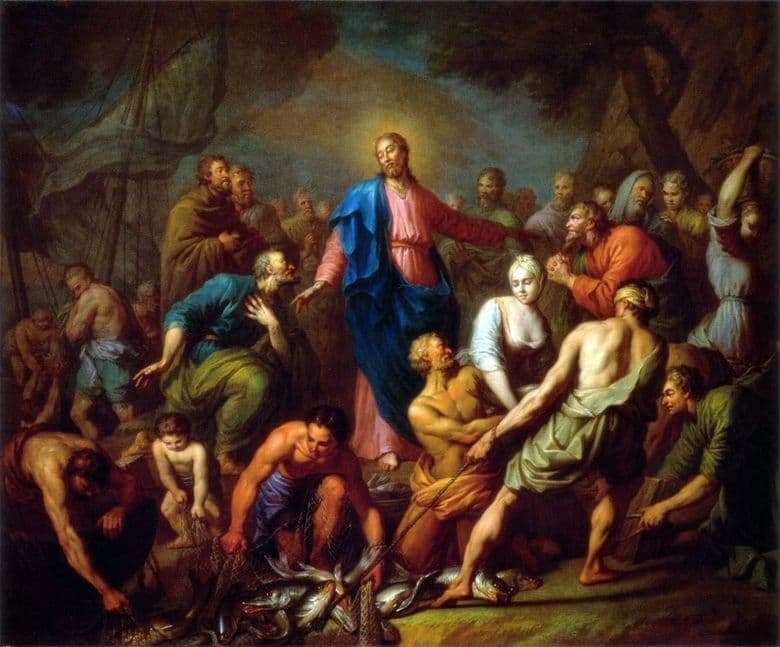
The plot served as a biblical parable about the miracle of the Lord on the seashore. The composition and color of the paintings were deemed worthy and this allowed the artist to continue his internship in France. The canvas was purchased by the Empress for the Hermitage. What attracted the attention of connoisseurs?
Superbly built composition allows you to pay attention to the central figure, while not losing sight of any detail in the minor characters. Realism and dynamic plasticity of images convey surprise and delight, mixed with some apprehension when one sees a miracle.
The figure of Christ is distinguished not only by the color of clothing, where the appearance of blue – the divine – is symbolic. The artist depicted a glow around his head. This is not the nimbus of a saint, according to belonging to the highest. Calm posture and wise glance lend significance and radiate confidence. The wide range of feelings on the faces of people, from distrust to the fanatical glitter of the eyes, is striking. The master was able to show the deep feelings of each character.
Nets full of fish symbolize abundance. In order to pull them out, we have to make joint efforts to many people, from children to old people. The game of light and shadow highlights individual fragments and makes you pay attention to the woman, who is concentrating on pulling the net. Or a boy who helps as much as he can.
The symbolically marked background gives the picture depth and, at the same time, does not distract from the main thing – people full of life and hopes for the best.
The color range of the painting is based on the opposition of cold colors of clothes and warm skin tones of working people. The master managed to breathe life into the biblical story.
Description of the painting by Anton Losenko “Wonderful Catch”
